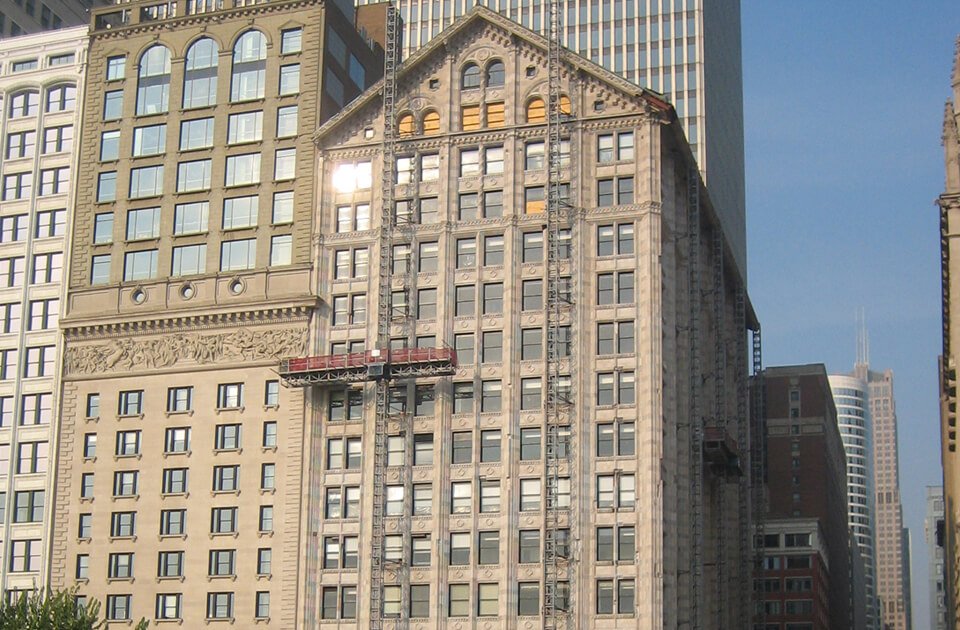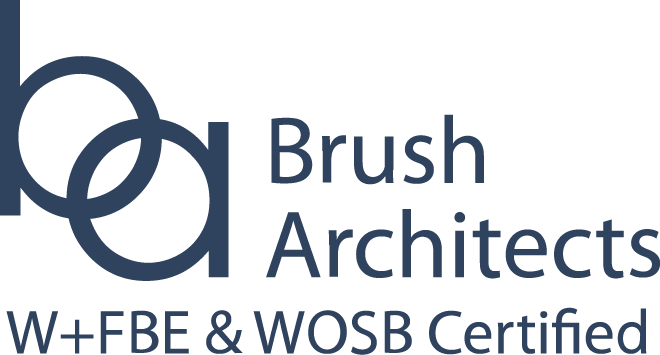Monroe Building
Private

Monroe Building
104 South Michigan Avenue
Chicago, IL 60603
Built
1911
Original Architect
Holabird & Roche
Restoration Architect
Mary Brush, Klein & Hoffman
Mary Brush, Holabird & Root
Category
Private
Landmark
National Register of History Places
Historic Michigan Boulevard District
Building History
The building was designed in 1910 by Holabird and Roche. Construction photos show that the entire building from demolition of the previous building to steel structure and terra cotta and window building enclosure took 6 months in 1911. The building is a Chicago landmark and also within the Historic Michigan Boulevard District on the National Register of Historic Places.
Preservation and Building Pathology Challenges
The primary challenge for the restoration was access to the facades. The steeply pitched roof and terra cotta cornice precluded the option for swing stage access. Mast climber technology preferred physical anchorage to the structural steel, which Ms. Brush did not approve due to unnecessary damage that would be caused to the terra cotta. The compromise solution redesign the anchorage to create tie backs through windows and utilizing the interior building structure. The terra cotta was in remarkably good condition for its age and perpetual weather damage from an eastward exposure to Grant park and Lake Michigan. Building cleaning revealed a subtle striping pattern in the terra cotta that had been obtained by varying the proportions of speckle glaze. The owners chose to restore the building to an exceptionally high level of historic accuracy benefited by extensive historic photographs and original drawings.
Design Solution
Mary Brush performed the 100% hands on critical examination and developed the restoration design through construction services while she was the preservation director at Klein and Hoffman. She transitioned to Holabird & Root with the completion of the building enclosure and maintained preservation leadership on the project for the building interior. Terra cotta was replaced with terra cotta to match the original. The roof original roof was determined to have been a deep green glaze Spanish tile. The replacement tiles blended green colors with a custom speckle to approximate the natural variation of the original. Skylights that had long ago been covered or removed for mechanical systems were replaced to match historic photos. The building lobby was primarily intact and was returned to its original condition including custom recreation of the original lighting fixtures. The ceramic tiles were identified in original documents as Rookwood tiles and the company was still in business. The replacement tiles were ordered from Rookwood, and the company benefited during a difficult economic downturn.
